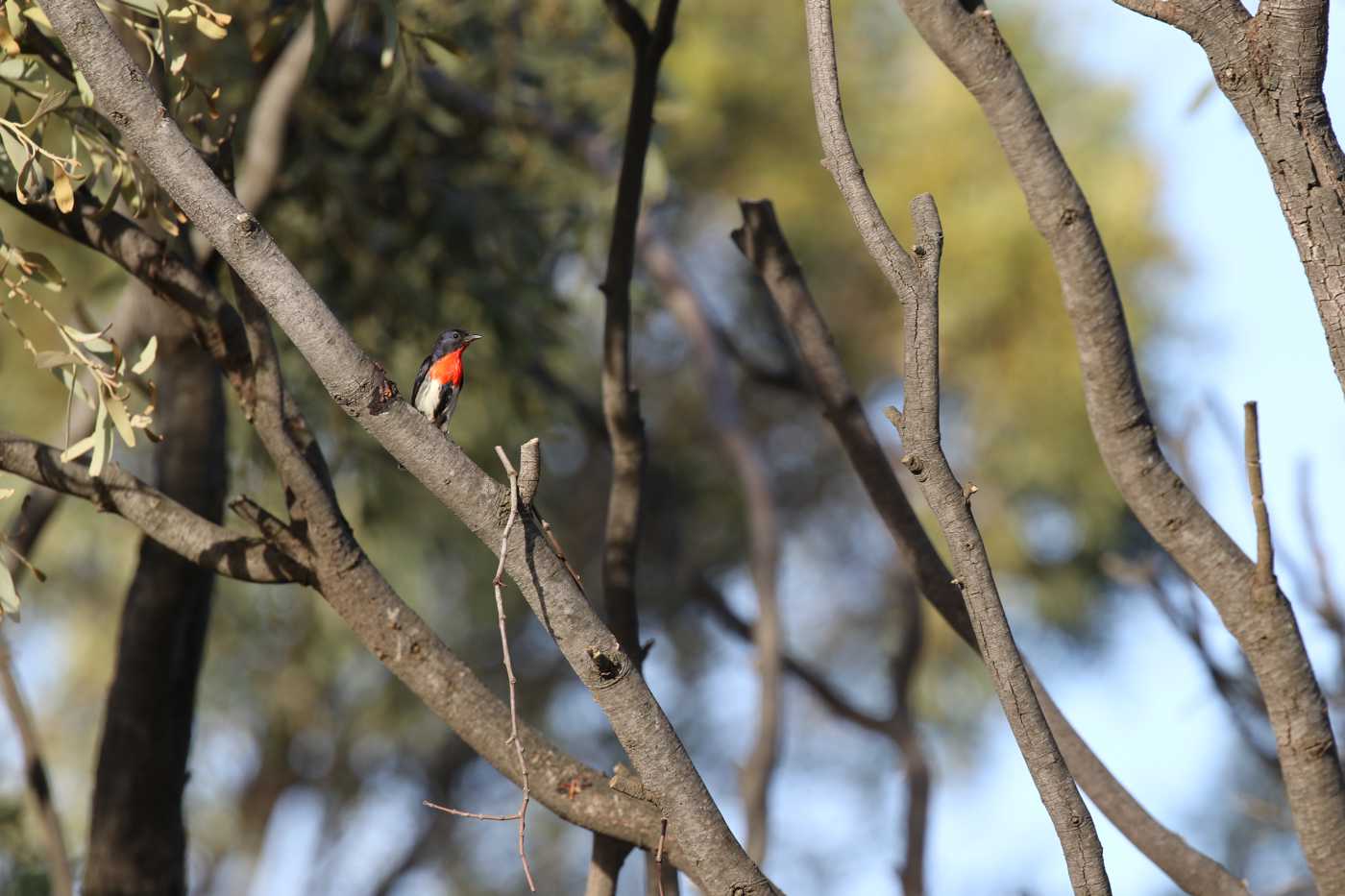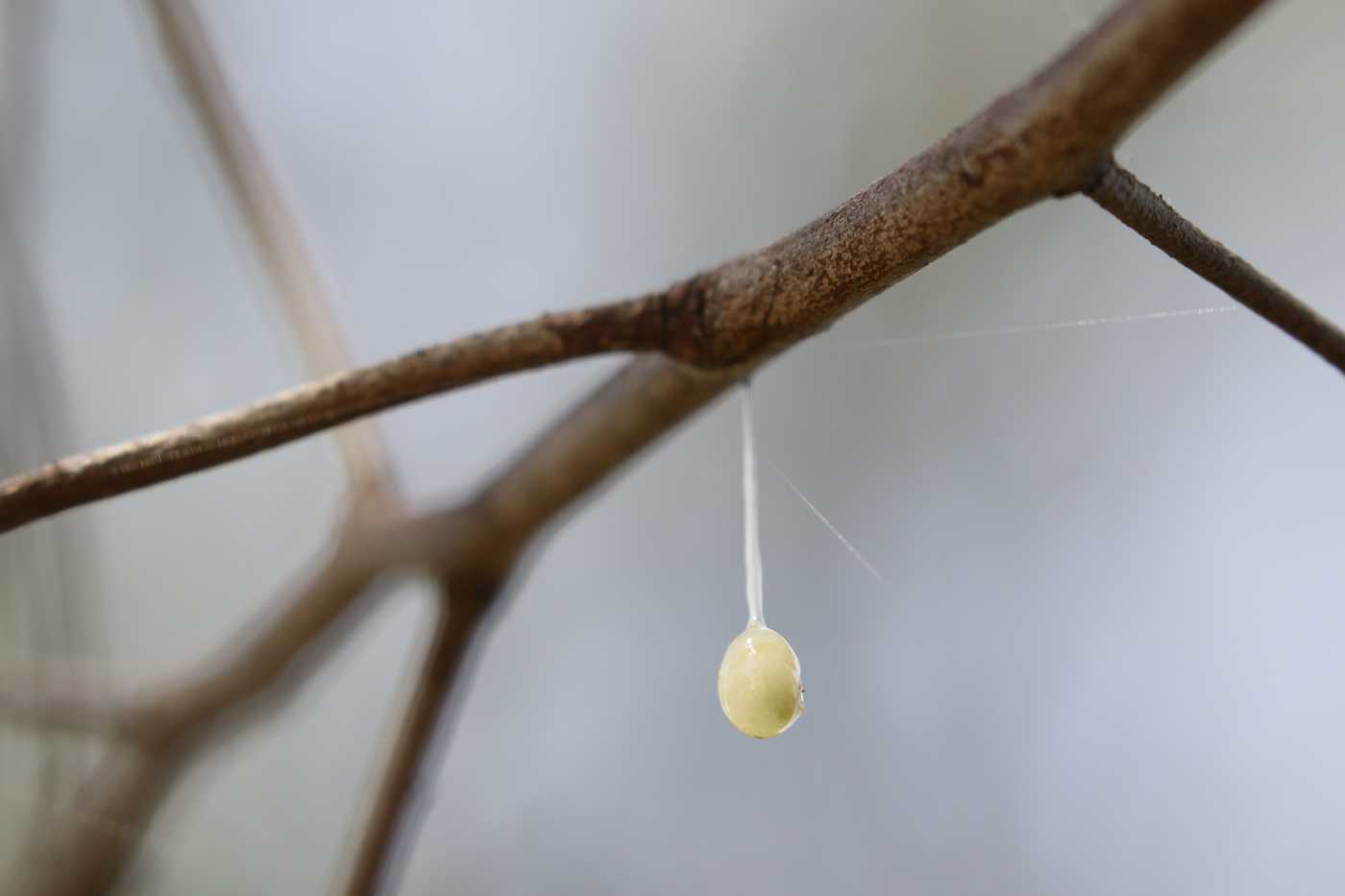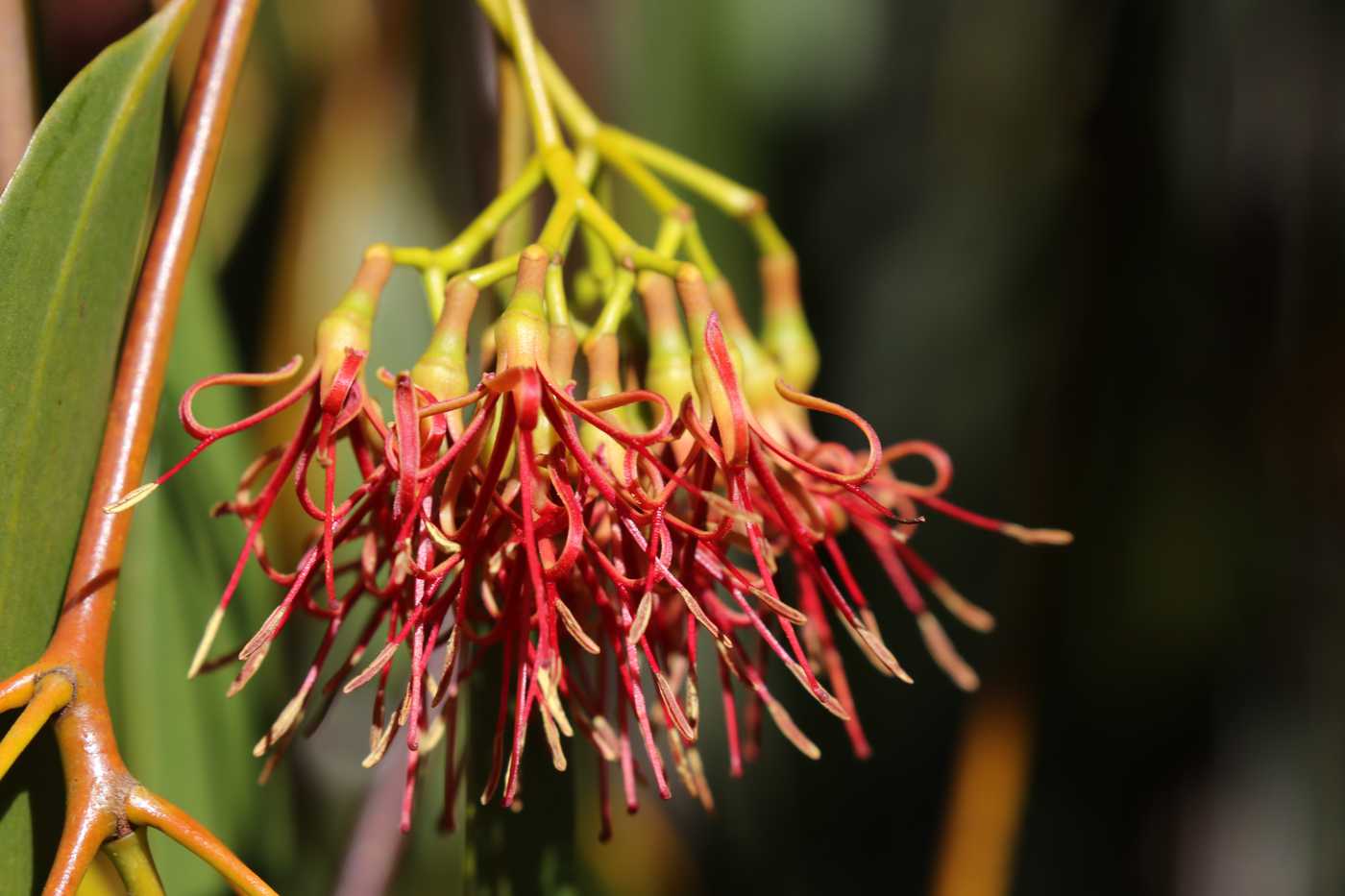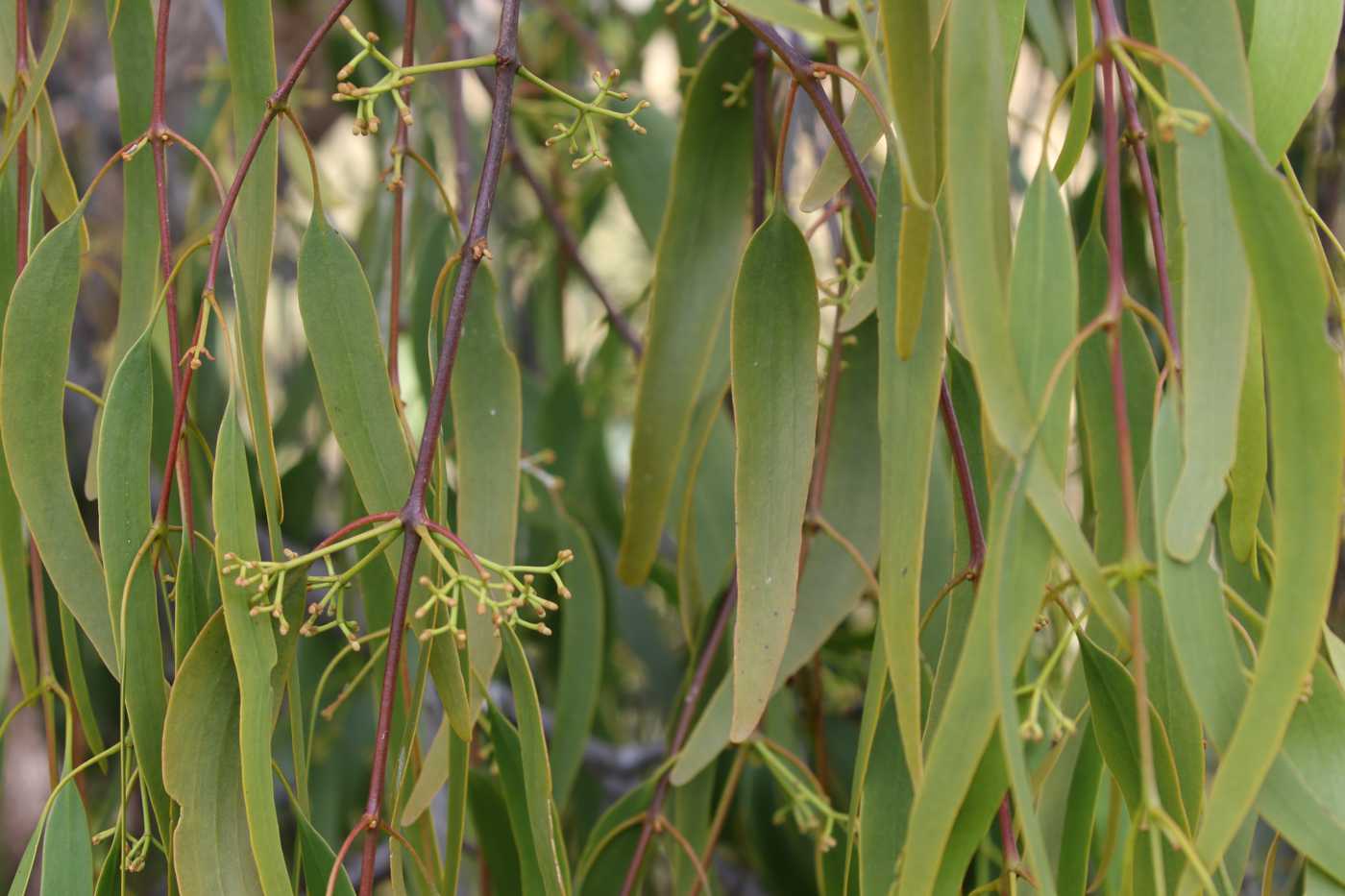You may have heard about mistletoe because of its place in Christmas festivities. The tradition goes that you are able to kiss anyone who happens to stand under a sprig of mistletoe adorning doorways, ceilings, or rafters. But there are better reasons to heap praise on mistletoe than simply its ability to allow you a cheeky kiss from the boy or girl you like. Mistletoes provide many services that help ecosystems to thrive.
Mistletoes are hemiparasites. This means they are able to provide some resources for themselves, but acquire others from their host plants. Mistletoe seeds lodge on the bark of a host plant where they germinate and enable an infestation to grow high in the canopy where light is plentiful. The mistletoe’s haustorium (the structure at the junction between the host plant and the mistletoe) taps into the xylem of the host plant and extracts water and dissolved nutrients.

Australian mistletoes rely on birds for pollination and seed dispersal. Birds, such as the aptly named Mistletoebird, feed on the abundant, fleshy fruits. In return for the nutritious meal, they inadvertently repay the mistletoe by carrying the seed contained within the fruit away to be deposited, intact, on a new branch once the seed has passed through the bird’s digestive tract. Mistletoe seeds are specially adapted to dispersal this way, possessing a sticky outer surface which helps to cement them to a branch when they are defecated out.


As well as benefiting the Mistletoebird and other frugivores by providing a meal, mistletoes also benefit many other animals by providing ideal shelter and nesting sites. Being a hemiparasite and tapping into the host’s water supply means that mistletoes can be water-wasteful. Plants need to take in and release gases to the surrounding air to be able to photosynthesise effectively. But this gas exchange process also results in a plant losing water. The amount of water lost through the tiny pores, called stomata, that enable gases to pass in and out of leaves is typically several times higher for mistletoe leaves than those of the host plant. This means that the leaves of mistletoes act like an evaporative air-conditioner, creating a cooler microclimate that offers relief during baking hot summer days.
Additionally, the foliage of mistletoes is often denser than that of other canopy plants. This feature provides benefits in the form of shade, structure for nest attachment, and concealment from predators. Two thirds of Australian bird species that nest in tree foliage have been recorded nesting in mistletoe. In the case of the Painted Honeyeater, almost half of all nests are placed in mistletoe clumps despite these being rare in the environment relative to foliage of other canopy plants. It is likely that climate moderation, structural advantages, and predator avoidance play a key role in this nest site selection process, with the added bonus of having a bountiful food supply right on the doorstep (or rather, neststep).

The hemiparasitic nature of mistletoes releases them to a large degree from the constraints of water and nutrient availability, enabling them to grow and replace leaves at little cost of their own. Consequently, mistletoes shed large numbers of leaves over an extended time period. This results in a thick layer of leaf litter under mistletoe clumps. Because nutrients are readily available to them, mistletoe leaves have high concentrations of important nutrients. The thick layer of nutrient-rich leaf litter is a boon for invertebrates, allowing the abundance of insects to be higher than in the surrounding forest. A thriving invertebrate community then provides flow-on benefits to higher levels of the food chain, enabling many insectivorous animals to prosper. Consequently, there is a correlation between the abundance of mistletoe and the number of species of woodland birds that are present.

Until the many ecological benefits of mistletoes began to be recognised, they were often seen as unfavourable plants because of their free-loading nature. It is true that mistletoes are becoming overabundant in some locations, with severe infestations contributing to the death of the host tree. This is likely a result of human modification of the landscape. Factors such as fertiliser use increasing nutrient availability, disruption of natural fire regimes (fire kills mistletoes and they are unable to re-sprout like eucalypts), and a reduction in populations of animals such as brush-tailed possums and the larvae of some butterflies that would have once controlled mistletoes through herbivory, may all be contributing to mistletoes becoming overabundant.
However, in other locations mistletoes are disappearing from our forests because land clearing has reduced the availability of suitable host trees and disrupted populations of key seed dispersers. The ecosystem services provided by mistletoes mean that it is important for conservation plans to consider mistletoes. If they are lost from our forests, it is likely that many other species that depend on the resources mistletoes provide will also disappear.
So there you have it. Whilst mistletoe occupies a special place in late December in the lives of many who celebrate Christmas, it provides benefits to ecosystems that are sustained throughout the year.


Leave a Reply